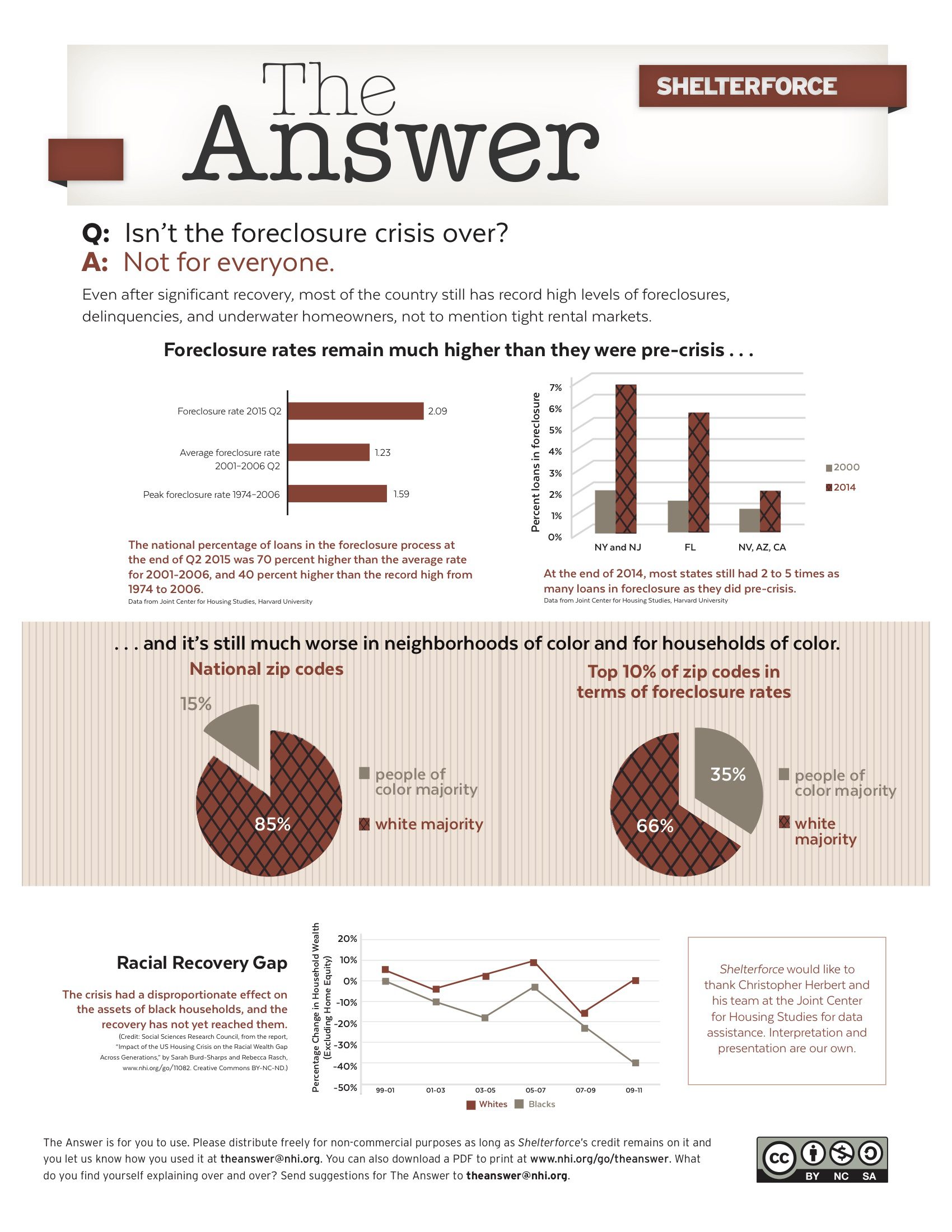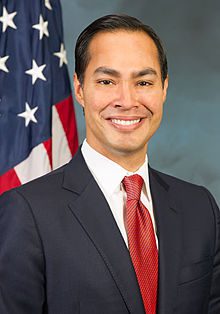
Austin, Texas, is a leader in accountable economic development incentives. Photo by Dylan H. via flickr, CC-BY-NC-ND
According to Andy Borowitz, the city of Austin needs help. “In a deepening humanitarian crisis, residents of the city of Austin report that they are completely surrounded by Texas, a situation that locals are calling ‘dire,’” he wrote in The New Yorker, riffing on Austin’s reputation as a “laid-back” hub for alternative music, film production, and technological innovation in an otherwise conservative state—a reputation that attracts an estimated one hundred new residents daily.
But perhaps the more significant way Austin is currently distinguishing itself from the rest of Texas, and indeed the rest of the country, is its economic development policy.
Chapter 380—A Long Process
Austin is everywhere touted as an attractive place for businesses. It boasts a steadily growing population that is largely college-educated—an estimated 46.7 percent according to 2013 American Community Service data—and, perhaps most enticing to the private sector, it is centrally located in Texas, a state with anti-union laws that does not tax personal income.
But it has seen its share of business cycles. Austin’s current economic development policy can be traced back to 2003, in the wake of the dot-com implosion. Austin had just seen the end of a decade of extraordinary growth. Per capita income had increased from $18,092 in 1990 to $32,039 in 2000, and the average price of a home had skyrocketed from $87,600 in 1990 to $199,500 by 2003. A fast-growing population, the rapid expansion of businesses, and significant investment in technology-related industries and Internet start-ups had helped to bump Austin to the top of the Forbes Magazine-Milken Institute rankings of Best Places for Business and Career in 1999 through 2001.
The national recession after 2001 caused this growth to flatline. Austin’s unemployment rate hit 6.2 percent in January 2003, well above the national average of 5.8 percent. Median family income dropped 5.9 percent from $71,100 in 2002 to $66,900 in 2003.
In addition, the overall income growth of the previous decade belied economic and racial disparities that continued to widen even as the economy began to recover from the recession. With the “tech” economy came high-paying jobs inaccessible to people without a high school diploma or a background in information technology, putting so-called “low-skilled” workers at a distinct disadvantage. While median family income increased slightly for the city’s white and Asian populations between 2000 and 2007, Latino and African-American families saw a sharp drop in median income, from approximately $45,000 a year to just over $37,000. A report released three years later noted that between 2006 and 2010, median earnings in Austin increased by 7 percent for white households but only by 4.9 percent for African-American households; Latino households experienced a 4.3 percent drop in median income during the same period.
At the same time, an influx of residents earning a higher salary drove up the cost of living, making it harder for low-income workers to make ends meet. East Austin, traditionally home to a large African-American community and located close to downtown, was a target for gentrification, which drove up housing prices and pushed out long time African-American residents in a trend that has yet to reverse itself.
A mayoral task force report in 2003 identified three points of focus for the city’s economic development efforts: small business and entrepreneurship, cultural vitality, and business recruitment and retention. These would eventually evolve into the current five divisions of the city’s Economic Development Department (EDD): Cultural Arts, Music and Entertainment, Redevelopment, the Small Business Program, and Global Business Recruitment and Expansion. Global Business Recruitment and Expansion administers the city’s programs that fall under Chapter 380, a section of the state’s local government code authorizing municipalities to provide financial incentives to businesses whose expansion will promote local economic growth.
Businesses that can demonstrate how their presence will result in jobs and revenue for Austin can apply for support in realizing expansion or relocation projects. From the beginning, Austin’s process has been more intentional than many economic development programs. The Economic Development Department uses a scoring system (called a “firm-based matrix”) to assess the potential impact a project will have, weighing costs against expected financial benefits to the city. The matrix takes into account a set of 11 criteria, including local hires, the diversity of new jobs created, and contracting opportunities for local businesses. According to David Colligan, manager of global business recruitment and expansion for Austin, these criteria are meant to evaluate how well the company’s values align with the city’s goals: “‘What is the corporate culture? Would employees be volunteering? Are they going to provide educational opportunities for their employees? What is the median wage as opposed to the highest wage?’ Once we come up with a score, we look to how much we will offer or negotiate based on how much we have as a benefit.”
Austin is in the enviable position of not believing it needs to offer companies incentives to get them to come to town. Between 2004 and 2012, Opportunity Austin made 254 announcements of corporate relocation and expansion projects. Of these, only 16 were granted Chapter 380 incentives. City officials insist that the deals they are offered are concretely a net benefit to the city.
For example, a 2005 “megadeal” with Samsung for the $4 billion construction of a 300 mm wafer fabrication plant is projected to net the city $440 million in revenue from Austin Energy and Water Utility (the country’s eighth largest publicly owned utility) and over $19 million in taxes over a 20-year period, while bringing 500 new jobs to Austin at an average salary of $60,111. It is projected to cost the city nearly $63 million in incentives. A 2012 deal with Apple for the construction of its Americas Operations center is projected to bring 3,635 new jobs to Austin with an average salary of $63,950 and create a net benefit for the city in a 10-year period of over $14.5 million above the $8.6 million offered in performance-based incentives.
What About the Non-Techies?
Economic development deals are often criticized for creating poverty-wage jobs. That doesn’t appear to be the case in the directly created jobs in Austin’s Samsung and Apple deals. But who has access to these new high-paying jobs? What is the quality of the construction and support positions created? Can economic development policy reduce economic disparities as well as spur growth? These questions are somewhat trickier, but Austin is trying to take them on.
“Today, as Austin is ranked first in overall economic performance and holds an official unemployment rate of 3.8 percent, the vision for utilizing this tool is shifting,” reads a March 2015 report, Chapter 380 Performance-Based Contracts. Its new focus? “Creating opportunities for hard-to-employ individuals, as well as families that are in poverty and those looking to advance into or up from the middle class.”
Austin has indeed started to work on adapting its policy, but this shift can in large part be traced back to advocacy groups like Workers Defense Project (WDP). In 2009, WDP collaborated with the University of Texas in Austin to produce Building Austin, Building Injustice, a report based on interviews with 312 construction workers and 20 developers, builders, contractors, and subcontractors in Austin. The findings were devastating: Of those workers interviewed, 45 percent earned poverty-level wages (less than $10.56 per hour); one in five had been denied payment for their work in Austin; one in five had suffered workplace injuries; and 64 percent had never received basic health and safety (OSHA) training. In addition, 30 percent of interviewees had been misclassified by their employers as “independent contractors,” a tactic that allows employers to shirk the responsibility of providing workers’ compensation, overtime, or benefits. This report was followed in 2013 by a statewide report, Build a Better Texas. Among its recommendations were ensuring safe working conditions and honest pay—two key points that would be taken up in Austin’s policy later that year.
Advocates had long tried, says Emily Timm, director of research and policy at WDP, to negotiate protections piecemeal into each incentive agreement—often with only partial success. For example, she says, “we may have been able to negotiate local hire but not a living wage.” Plastics manufacturer US Farathane is a case in point: the contract for its 2011 10-year incentive agreement covering a new plant required it to make “commercially reasonable efforts” to partner with local nonprofits to build a diverse pool of candidates from which to recruit; however, there were no requirements for a minimum wage.
In 2013, the Austin City Council voted in favor of adding requirements for worker’s compensation, OSHA safety training, health insurance provisions, domestic partner benefits, and an $11/hour minimum wage for construction workers on all projects involving incentive agreements. Additionally, they added points to scoring criteria for companies that develop a recruitment strategy targeting traditionally disadvantaged groups, particularly people who have not finished high school or with a history of incarceration.
With these provisions, companies are under greater pressure to ensure their projects benefit workers at all levels, not just at the top. It’s possible this may have contributed to US Farathane’s choice to opt out of the incentives program. But for organizations like the Austin/Travis County Re-entry Roundtable—a local coalition of stakeholders committed to minimizing the rates of redicivism among people who were formerly incarcerated—these changes are exciting. “The opportunity to engage employers seeking economic development assistance from the city in conversations about reducing barriers for persons with criminal backgrounds is critically important,” says Laura Sovine, chair of the A/TCRRT, “and we view the city as a key partner in these conversations.”
Transparent and Performance Based
While implementing public subsidies as an economic development strategy is a common practice all over the United States, a commitment to transparency is a lot harder to find. According to a May 2013 evaluation of online disclosure practices by national advocacy organization Good Jobs First, two-thirds of local economic development subsidy programs in the nation’s 64 largest cities and counties “do not even reveal online which companies are receiving the assistance, much less the costs of the deals, or how many jobs were created in return.”
On the other hand, since 2006 Austin has published all the details of its economic development Chapter 380 agreements online. A downloadable table lists the name and address of each incentive recipient, the approved incentive amount, the total payment issued to date, the number of jobs the project will create over the term of the agreement, and links to the pdfs of the council resolution approving the agreement and the agreement itself. Austin was among only three municipalities that scored 100 points in the Good Jobs First survey. “We feel it is to our benefit to have the public informed about the terms of the agreements and the companies’ performance,” explains Melissa Alvarado, public information officer at Austin’s Economic Development Department.
Even details of Chapter 380 agreements that are no longer active remain visible to the public through the portal. Twelve out of the 21 agreements currently listed on the city of Austin’s website are inactive; of those, 11 companies are operating in Austin without the support of public incentives. Of the three agreements drawn since October 2013, two are listed as inactive and all three have received zero incentive payments to date. Thomas Cafcas at Good Jobs First sees this in a positive light: “The prevalence of active agreements without payments issued suggests that the local government is doing a good job enforcing the agreements.”
This is another feature of Austin’s incentive program that distinguishes the city from other municipalities in Texas and across the nation: each agreement is performance based, meaning companies must meet the requirements of their contracts before receiving payment. “You don’t receive anything up front,” Colligan explains. “We make sure you’ve met the obligations before you receive anything.”
Compliance reports for each year are accessible to the public via the same open-data portal as the agreements themselves. Of course, Cafcas warns, “transparency doesn’t always equate to accountability.” And accountability doesn’t always equate to effectiveness.
Earning a Piece of the Action
Austin is trying to go beyond transparency. Along with the job-quality provisions for construction work, it has also added provisions to its Chapter 380 codes that attempt to address the exclusion of small businesses owned by women and people of color from economic growth. Companies receiving public subsidies are now contractually bound to make inclusivity a part of their business plan, and for some, this has proven to be a considerable challenge.
Such requirements did not materialize overnight. In 1987, the Economic Development Commission reviewed policies related to contracting local “minority-” and women-owned small business enterprises (W/MBEs) and concluded that there were “significant disparities” between the number of qualified W/MBEs available in Austin and the number of those businesses that received city contracts. Commercial development in the 1990s also largely bypassed minority-owned businesses.
One of the city’s first attempts to address these disparities was to provide technical assistance to any small business through bonding and insurance programs. But a 2005 study conducted by the city revealed that “gender- and race-neutral” strategies had done nothing to rectify the legacy of discrimination in the marketplace, and prompted the development of a more targeted strategy. This resulted in the Minority-Owned and Women-Owned Business Enterprise Procurement Program, focusing on four specific areas: construction, professional services, non-professional services, and commodities. In city procurement related to construction, for example, the program aims for 13.7 percent participation from businesses owned by people of color and 13.8 percent participation from businesses owned by women. Ten years on, the approach appears to have borne some fruit: This year the Greater Austin Black Chamber reported that the average of receipts for African-American-owned firms in the Austin metro area increased from $83,648 in 2002 to $120,270 in 2007, well above the statewide average of $60,206.
Chapter 380 incentive agreements have gotten more specific as well. The agreement drawn with Samsung back in 2005, for example, simply states that Samsung “shall endeavor to acquire goods and services in a manner based on the goals set out in the City’s Minority and Women Business Enterprise regulations.” Fast-forwarding to 2014, exactly how and to what extent the company should “endeavor” to do this is spelled out in greater detail. Athenahealth, for example, must seek out M/WBE suppliers for commodities or services that exceed an annual threshold amount of $57,000 and maintain documentation of their attempts to do so. All four areas of the W/MBE Procurement Program are referenced, and the company must consult the city’s Small and Minority Businesses Resources Department (SMBR) to discuss compliance with the program before committing funds to any services or commodities associated with construction.
Some businesses have argued that the cost of complying with the rules of the W/MBE Procurement Program with respect to certain goods and services was more than they could handle. This tended to be the case when the company failed to adequately document the required procurement process for small purchases, which includes contacting every vendor on the SMBR availability list. “What we’ve seen is that it will typically cost a company $17,000 to $20,000 to comply with the program,” says Colligan. As a result some companies opt out of the incentive agreement. Dropping the agreement does not necessarily mean that they will not go on to do business in Austin (in fact most do), Colligan says. It simply means they will do so without public money, and that the city “loses the benefit of ensuring that the company will interact with the local economy as required by the agreement.”
Some see this as a failure in the application of Chapter 380. When Dropbox and US Farathane pulled out of their deals in 2014, former mayor of Austin Lee Leffingwell—who notably voted against provisions added to Chapter 380 the year prior—argued that the conditions of the incentive agreements had “greatly diminished the effectiveness of the program.” He specifically cited the prevailing and minimum wage requirements. But this argument rang hollow among the majority of council members who had voted in favor of additional provisions.
“Austin had already rebounded from the economic recession, and construction was booming in Texas,” says WDP’s Timm. “People were moving to Austin in droves and companies wanted to come here.”
“Companies are free to not take a public subsidy if they don’t want to comply,” says Cafcas. “If you don’t require these standards and you don’t have any way of measuring a company’s performance, how are taxpayers supposed to know that they are getting a reasonable return on their investment?” That’s certainly a perspective that any business should understand.
Chapter 380 and Beyond
There has been no comprehensive study of how each city in Texas enacts Chapter 380 (though Workers Defense Project is working on one), but one thing is certain: Austin is unusual, both in the level of transparency in the requirements for its incentives and in its push beyond “number of jobs” to measure different kinds of results. However, the city is so far still indistinguishable from the rest of Texas when it comes to economic segregation. In fact, an index measuring combined economic segregation as determined by income, education, and occupation shows that Austin currently ranks highest among large cities in the United States, followed closely by San Antonio and Houston.
Repairing the complex roots of economic inequality is a task that will demand complex and multi-dimensional solutions. Austin’s work on economic development transparency, performance, and inclusivity are steps in the right direction, but should not be mistaken for the final destination.






Thanks for this piece. It’s kind of hard to keep up with the way Austin is operating when it comes to the housing market. This article sheds some good light on Article 380.